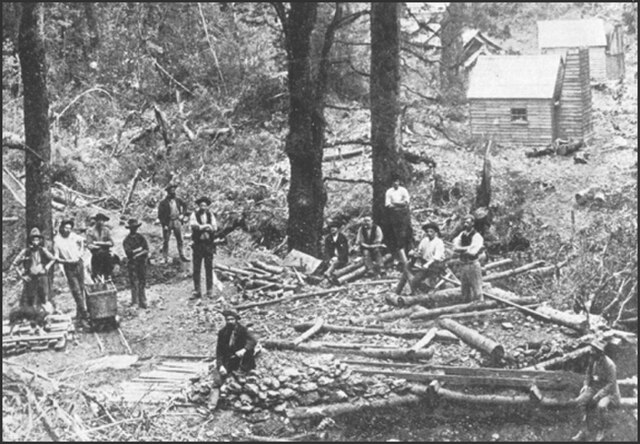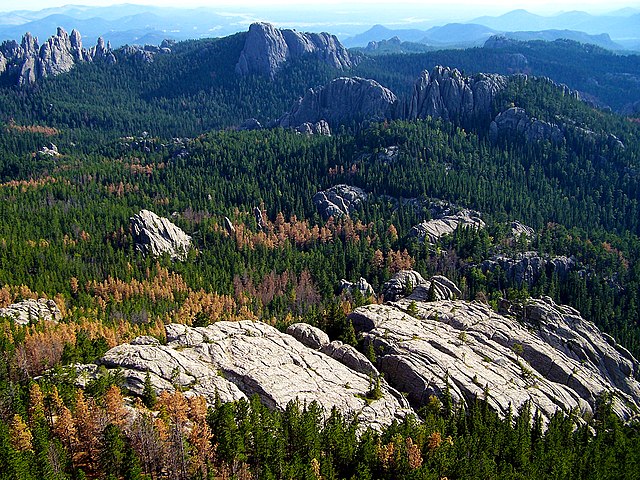The Black Hills is an isolated mountain range rising from the Great Plains of North America in western South Dakota and extending into Wyoming, United States. Black Elk Peak, which rises to 7,244 feet (2,208 m), is the range's highest summit. The Black Hills encompass the Black Hills National Forest. The name of the mountains in Lakota is Pahá Sápa. The Black Hills are considered a holy site. The hills are so called because of their dark appearance from a distance, as they are covered in evergreen trees.
The Needles, Black Hills
2006 Space Shuttle image of the Black Hills
Gold miners in the Black Hills
Abandoned cabin near Dewey in the southern Black Hills
South Dakota is a landlocked state in the North Central region of the United States. It is also part of the Great Plains. South Dakota is named after the Dakota Sioux tribe, which comprises a large portion of the population with nine reservations currently in the state and has historically dominated the territory. South Dakota is the 17th largest by area, but the 5th least populous, and the 5th least densely populated of the 50 United States. Pierre is the state capital, and Sioux Falls, with a population of about 213,900, is South Dakota's most populous city. The state is bisected by the Missouri River, dividing South Dakota into two geographically and socially distinct halves, known to residents as "East River" and "West River". South Dakota is bordered by North Dakota to the north, Minnesota to the east, Iowa to the southeast, Nebraska to the south, Wyoming to the west, and Montana to the northwest.
Deadwood, like many other Black Hills towns, was founded after the discovery of gold.
A South Dakota farm during the Dust Bowl, 1936. Normal tilling practices turn South Dakota's fragile soil into a fine, loose powder that blows away, and sometimes covered vehicles, equipment, and buildings with dust during the Dust Bowl.
Badlands National Park
The Black Hills, a low mountain range, is located in Southwestern South Dakota.








